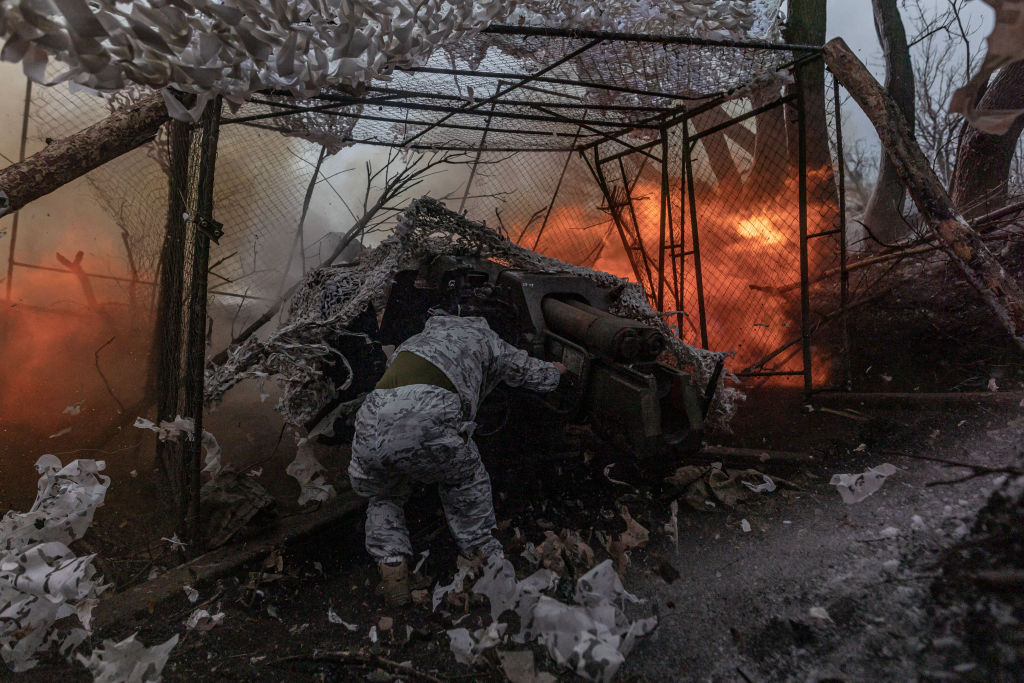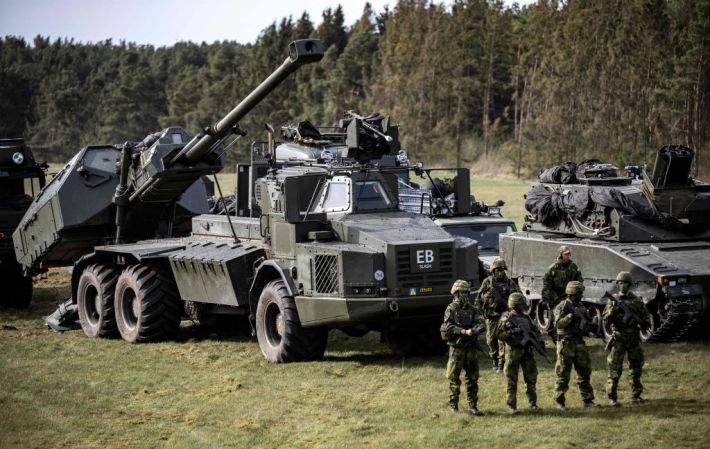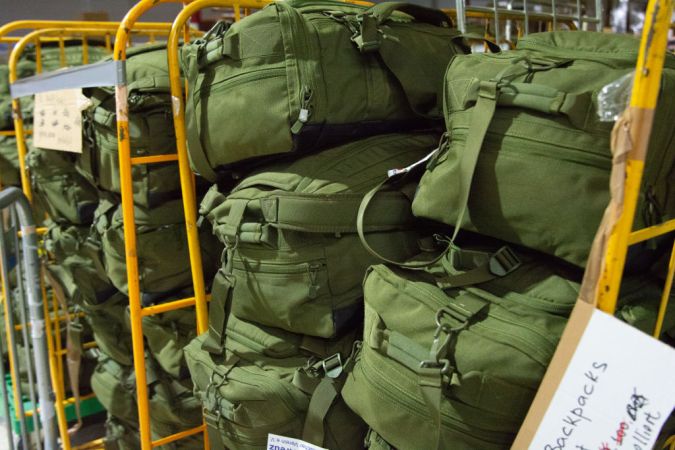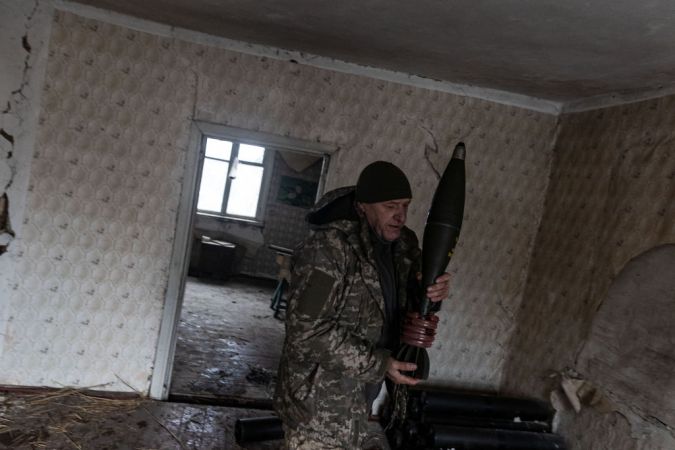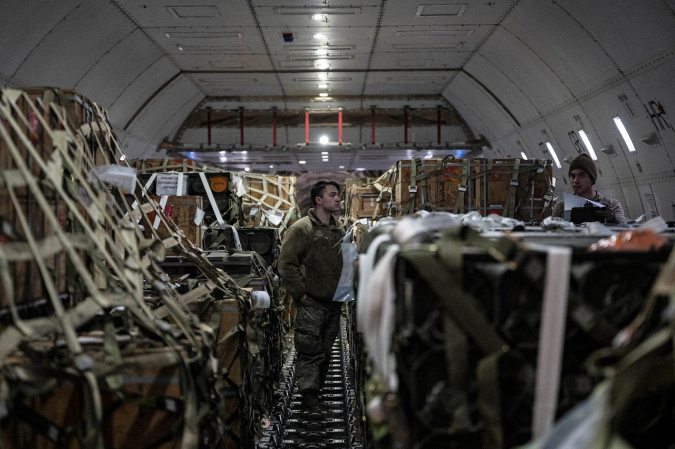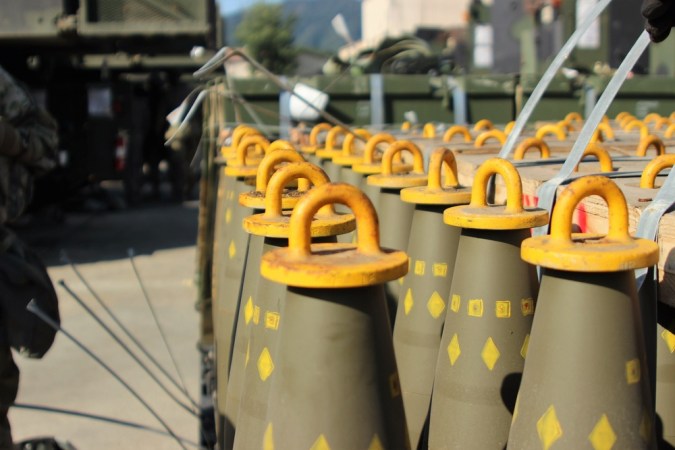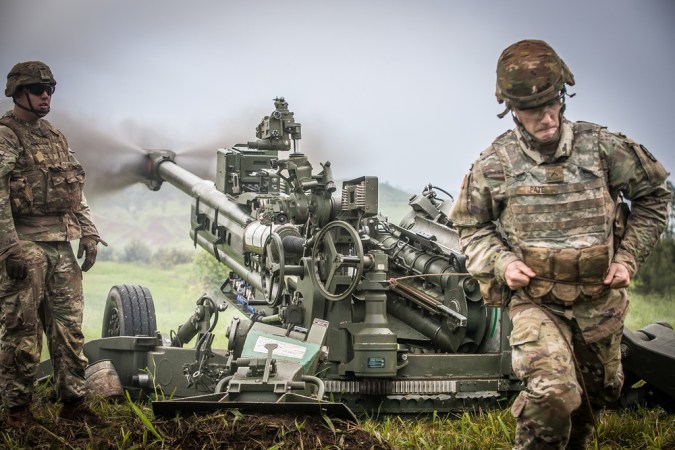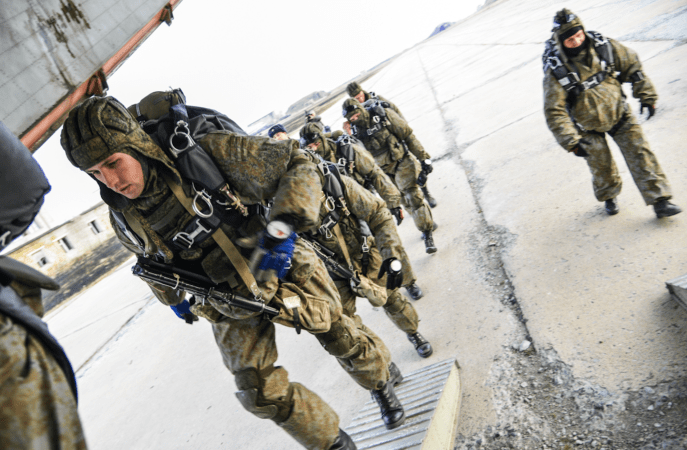Ukraine’s military rapidly modernized after 2014. But it still shows some of the Soviet Union’s wartime preferences, including a heavy reliance on artillery. While it cannot put the mass of fire downrange that Russia can, it is slowly whittling away Russia’s artillery advantage. This appears to be from a combination of Western aid, natural weapons fatigue, and Ukrainian’s destruction and capturing of Russian systems. But Ukraine faces tough logistics to prevent a reversal.
Russian artillery advantage
Russia had a larger artillery corps when it launched its 2022 full-scale invasion which greatly broadened the conflict beyond the lines of 2014-2022. That artillery corps, combined with the larger Russian industrial base, allowed Russia to fire many more artillery shells than Ukraine.
According to a paper by Army Lt. Col. John Q. Bolton in Military Review, Russia managed to fire twice to four times Ukraine’s artillery rate daily in early 2023. That represents a huge disadvantage if you’re the Ukrainian in the trenches, trying to survive strikes. Worse if you’re attacking Russian lines.
And Russia maintained that advantage despite losing 5-10% of its guns, according to Bolton.
But Russia continues to gamble its men, artillery and other assets away in shockingly cavalier style. It is waging a static defense with conscripts quite wastefully, despite thick defensive belts. Some estimates say that Ukraine inflicted as many losses as it took during the recent counteroffensive. Justin Crump of made that point on the BBC’s Ukrainecast on November 7.
That’s a frankly shocking possibility since military science dictates that attackers, without some advantage, always take heavier losses than defenders.
He also pointed out that artillery trendlines are moving in Ukraine’s direction, though they remain in Russia’s favor.
What could be causing the shift?
The trend change is more about Russia losing artillery mass than Ukraine gaining it. So, looking at developments in the last six months, it seems likely that changes are resulting from Ukraine destroying and capturing guns, Russian guns naturally wearing out, and Ukraine getting some added Western aid.
First, Ukraine has done a great job capturing and destroying Russian weapons across the board. The now retired Oryx website was the most famous tracker for Russian losses. It only counted losses with photographic proof and tallied over 1,000 Russian artillery pieces and support vehicles lost. Kyiv claims over six times that number.

In fact, David Axe follows the war for Forbes and estimated in July that Ukraine is killing four Russian guns for each gun it loses.
But Russia isn’t losing guns just to Ukraine. It’s also just wearing out barrels and guns. An anonymous Western official told Reuters and other journalists that they believe Russia has expended over 10 million artillery rounds in the conflict but can only produce 1 to 2 million rounds a year.
So, in addition to a pending ammunition crunch, Russia has to be facing widespread weapons fatigue. Weapons that rely on gunpowder explosions, from handguns to railroad artillery, face enormous stress every time they fire. The explosion and friction heat the metal components, which become soft. The high barrel pressure stresses the heated metal. And the exiting round shears off metal bits, especially from rifled barrels.
So even Russia’s guns that never suffer a Ukrainian strike just naturally age out of the system, adding to Moscow’s woes.
And finally, while Ukraine will always make the case that it could use more guns, it is getting shells and barrels almost as fast as the West can produce them. That helps prevent Ukraine sliding down in artillery power. And the addition of more powerful rocket artillery and missiles, like HIMARS systems and ATACMS missiles, help Ukraine strike from further back, reducing losses.
Ukraine’s artillery logistics are hard
Militaries know that supply and logistics are hard. The U.S. splits its supply into nine military classes plus economic aid. Class V supply, ammunition, starts out hard and gets vastly more challenging the more different weapon systems an army has.
It can be tough to supply a single rifle company, even if most of its shooters are firing 5.56mm ammo. That’s because ammo is explosive, can be damaged by water or salt, is heavy, and is restricted from traveling on some roads. Now imagine serving an artillery division with a mixture of guns, with fuzes separate from shells separate from propellant powder.
Now imagine the division has battalions and batteries with guns from different countries, built to different standards, and needing different ammunition. So even a 155mm battery in one battalion might have different supply needs than a 155mm battery in another battalion.
And the overall mixture of guns includes NATO guns, mostly 155mm and some 105mm weapons, as well as Soviet weapons more likely to be 122mm, 130mm, or 152mm.
Add it all up, and it’s a wonder that Ukrainian supply officers aren’t falling victim to rampant migraines and panic attacks.
Hope for future Ukrainian artillery

There may be some light on the horizon, though, even if its pretty far out. NATO officials are pushing for more countries to comply with NATO’s voluntary standardization. While all NATO members agree to 155mm, other dimensions of the weapons and ammunition have only voluntary standards. So, some shells are longer than others or taper differently or work with different packages of propellants.
If NATO manages to convince more countries to adopt a complete standardization, then it could reach a day where all 155mm shells are interchangeable…sometime in the next few years or decades. After all, guns built to take a specific 155mm shell will still need that specific shell until retrofitted or retired.
Hopefully, Ukraine will win long before the standardization is finished.
Logan Nye was an Army journalist and paratrooper in the 82nd Airborne Division. Now, he’s a freelance writer and live-streamer. In addition to covering military and conflict news at We Are The Mighty, he has an upcoming military literacy channel on Twitch.tv/logannyewrites.


